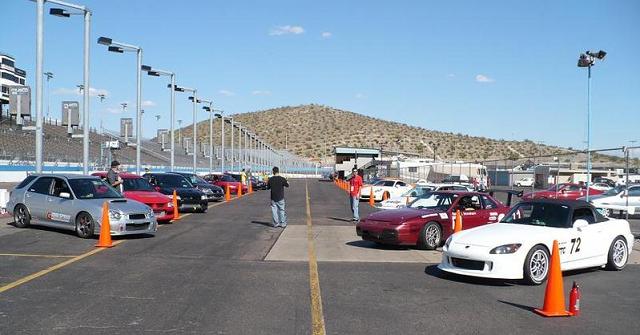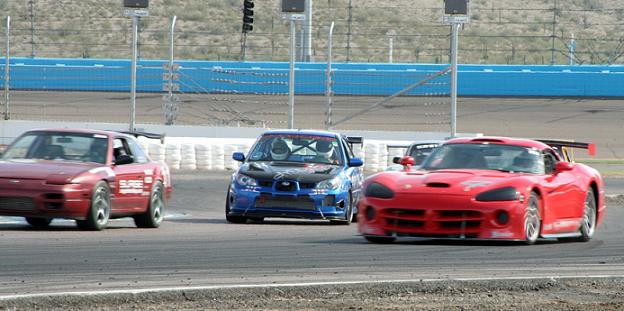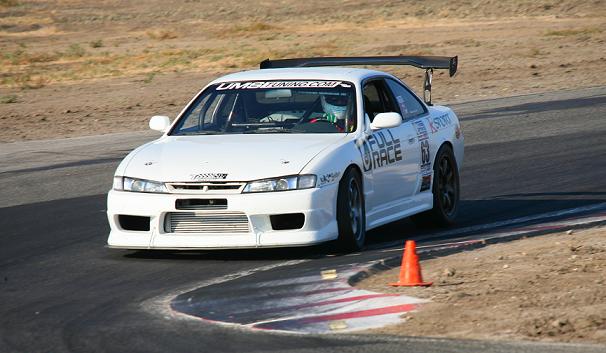Time Trial vs. Time Attack
Welcome to the Driver’s Corner – a section that will be dedicated to discussing a various issue, or issues that come up in NASA Arizona. With such a wide variety of drivers ranging from HPDE1 to race group, and even spectators, the hope is for someone to take something away from this section and learn a little bit about what goes on at NASA events. That being said, it’s time for this month’s installment: Time Trial vs. Time Attack…

I’ll save you the lecture about which one I think is better, that’s not the point. The point of this topic is to clear up the mess and confusion that surrounds these two series, as it can be entirely all too confusing for the average non-participant to think about. NASA Arizona is the only region on the country to have an active Time Attack series, in addition to the Time Trial program. Without further ado, here are some definitions:
Time Trial (TT): TT is a nationally sanctioned series supported by NASA. With the only differentiating factor being the name, the structure—the rules, rulebook, classing system, CCRs—is identical to that of the Performance Touring (PT) and Super Touring (ST) system the race group uses. A PTA car is a TTA (Time Trial, Class A) car. A TTC car is a PTC car. A driver wishing to race and run in the time trial program can crossover between the two series without changing a thing. The PT rules extraordinaire Paul Bloomberg, classes PT cars the same way Jeremy Renshaw classes TT cars.
The TT format on track is simple: drivers enter the track at timed or spaced intervals, and the purpose is to turn the fastest lap possible. The fastest single lap from the entire day determines the finishing position within the class (TTB, TTC, TTA, etc). Think of it as a race group qualifying session. Formerly dubbed HPDE 4, the Time Trial group averages 30-35 entrants, split up into Big Bore and Small Bore groups that run apart from one another to ensure clean laps.

Speaking of which, clean laps are the name of the game for TT! Considering a driver has all day to turn one single fast lap, drivers often chart track conditions and weather to determine the fastest possible conditions for their single lap. Balancing the track conditions, time of day, air temperature and ideal tire temperatures can be tricky, but when combined with lapped traffic, can make for some interesting comments during the download sessions!
Summary
Pro: You get four, 20-minute sessions to turn your best lap
Con: With all TT drivers on track at the same time, traffic can be an issue
Rules: Very specific classes; rules are inline with race groups. Nationally sanctioned and supported by NASA
Time Attack (TA): The TA series was formed locally and has no national support from NASA, and no national rulebook or guidelines. All rules, format, driver classing and administration were formed here in Arizona by NASA members. The TA series mimics the trendy time attack events put on (on a much larger scale) by Super Street Magazine and the Redline Time Attack Series. A twist to the TA series is the entry fee. On top of the NASA daily entry fee, all drivers pay $20 cash to get into the TA event. All the money is put into a pot, and then it is divided up and given back to the winners of each class as prize money. While it doesn’t exactly pay for a day at the track, it’s often enough for a nice steak dinner or tank of race fuel.
The classing for TA is simple: power to weight. There are three classes, each with a range of power to weight limits. For example, TA class B (aka, TA-B) has a power to weight limit of 9:1 to 13.99:1. As long as you’re within those guidelines and your tires are DOT approved, anything goes. The purpose of this is to allow new entrants easily and not have the worry of classing cars using a complex set of rules. The TA series is more “loose”, and meant to be fun, although some take it rather seriously!

The competition format is simple: think Indy 500 qualifying day. The TA entrants are divided up into groups of 3-4 drivers. The drivers in each group are released onto track, usually about 15-20 seconds apart, thus giving plenty of space for everyone. The lap out is the warmup, with a green flag waving the first time by the start line. Each driver gets two hot laps, then a checkered flag. The limited number of laps and the added pressure of driving on a nearly empty track with people watching, makes for a tough experience that can be a lot of fun.
Summary
Pro: It’s you on an empty track – generally no issues with traffic
Con: You only have two laps to rip off one good one!
Rules: Very basic, very open
So there you have it, be confused about Time Trial and Time Attack no more! If you are interested in either series, talk to your HPDE group leader, or the Time Attack director Jeremy Ward, or Time Trial director Jeremy Renshaw. Both series are “invite only” (meaning, you have to meet the minimum requirements) and require a specific level of track experience.
